Plodding along, one heel-to-toe roll at a time, I wind my way through the sagebrush in Sinks Canyon. Trail running has me feeling lucky that I have the time and privilege to enjoy the clean fresh air of the mountains, coolness of an aspen stand, and the iconic scenery of the canyon. Although the dolomite stone walls above and spring river raging beside me seem ancient and enduring, I understand that the habitat I am seeing around me is not the same it has always been.
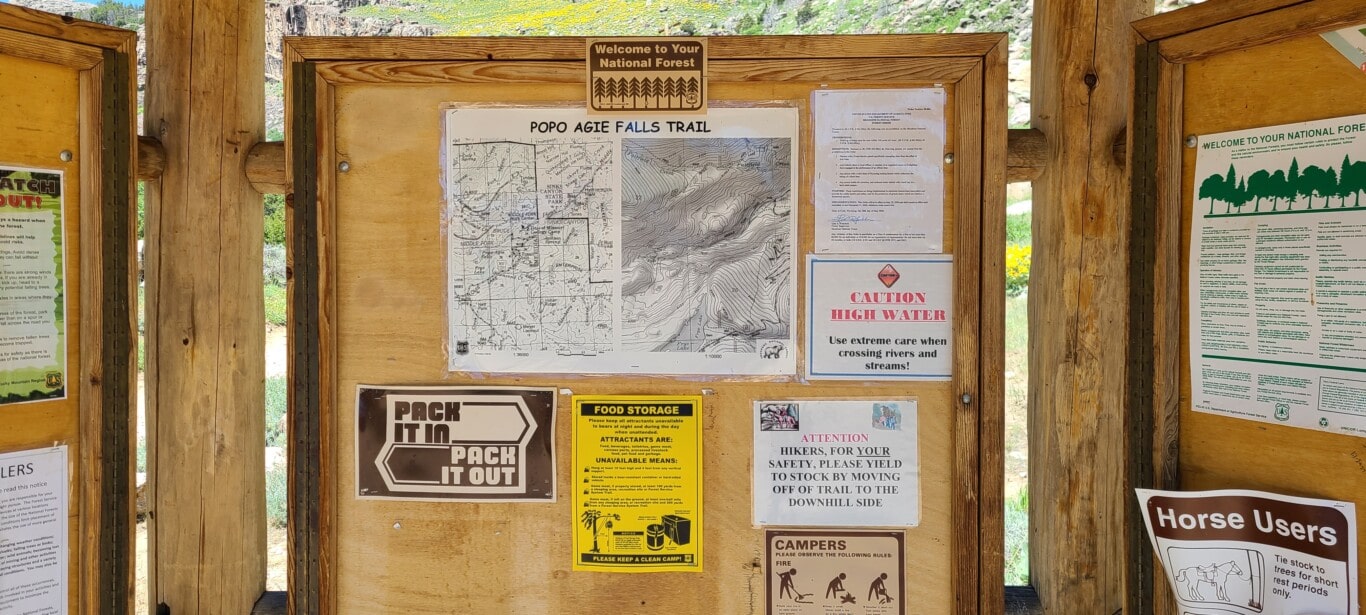
The threads that connect the plants and animals in an ecosystem can be complex and delicate; in a place like Sinks Canyon, we can see those threads pulled by the presence of humans. The recent boom in visitation to this recreation area, for example, has caused bighorn sheep to completely evade the area. Hikers and dogs have put more pressure on mule deer, and changes in weather patterns have made it harder to aspen stands to take root without human aid. Experiencing Wyoming public lands is a unique experience that has been protected by dedicated and passionate women and men since it became apparent that human factors could cause harm to wildlife, but recently increased pressure on ecosystems calls for outdoor enthusiasts to learn more about how to protect the habitats they love.
At the mouth of the trail, a forest service sign is plastered with posters reading “pack it in, pack it out,” “please yield to stock,” and a few with fire safety rules and maps. It’s beaten up and looks like it’s been there for at least a few years. From this sign, I can learn many things about what I can do while enjoying the trail or the backcountry to protect it from the negative impacts outdoor recreation can cause. Although signs like this have sat as the “straw boss” of trailheads for my lifetime and for generations before I was born, an increase in visitation to public lands demands that we all take our own actions in the wilderness a bit more seriously.
Changes of weather patterns in recent history have increased the likelihood of droughts in Wyoming and other arid regions of the world. In fact, over 80% of Wyoming is already experiencing mild-to-severe drought this summer. In Wyoming, we are familiar with dry weather, but the more severe weather patterns can make it harder for the ecosystems we all enjoy to bounce back after being damaged. Basically, right now there is more stacked against wildlife than historically. Therefore, we all have room to be more mindful of our impacts when we are out and about.
What does good stewardship look like? Whether you’re on your way through town or someone who calls Wyoming home with pride, it looks pretty similar.
Here are three things to do in the wilderness this summer that are crucial to keeping it wild, especially with the changing conditions around us:
Pay attention to fire restrictions
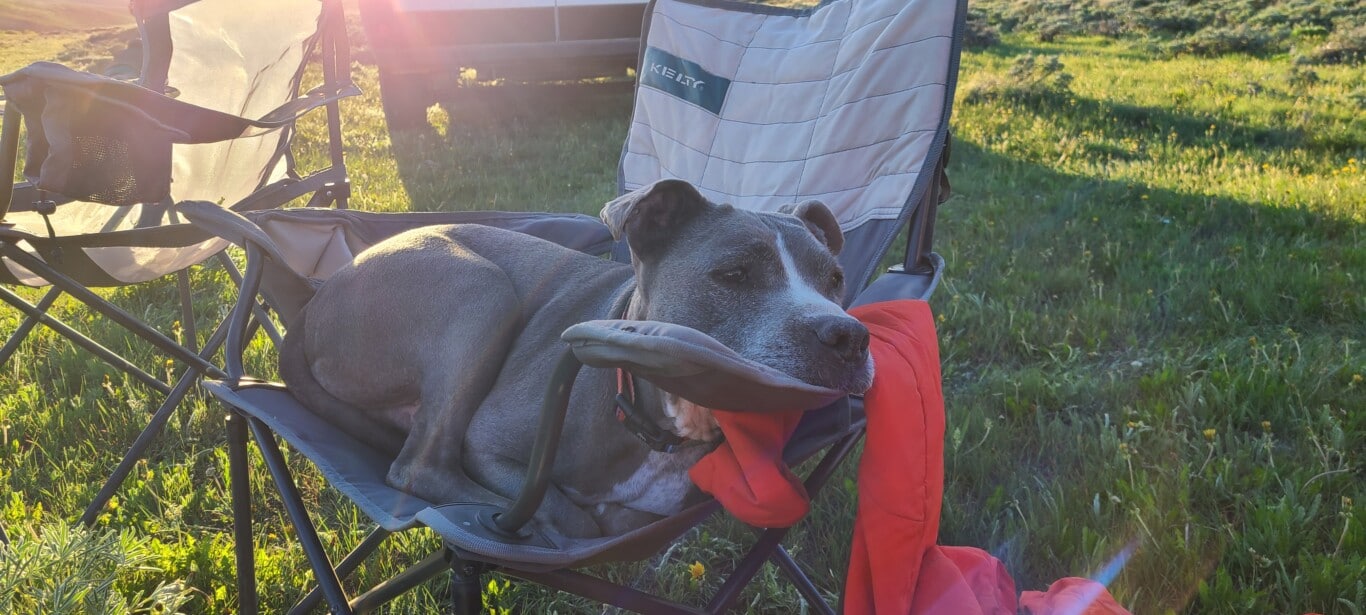
These restrictions are not suggestions, and the people behind it have legitimate reasons for them. These regulations are set by people who appreciate the landscape the same way you or I do.
These cover whether fire is permitted, and if so what kind of containment fire is required to have. Regulations can cover explosives or fireworks as well and are subject to change- so keep tabs if you regularly spend time outdoors. The best practice is to “know before you go,” which means whether you look it up online or call the appropriate land management offices, you should understand fire regulations for a location before setting out. The Bureau of Land Management, Forest Service, and Wyoming Game and Fish all have their own set of regulations for their public use lands.
Be mindful of invasive species transferal
Increased severity of droughts and disturbed ecosystems can usher in invasive species like cheatgrass, which burn more frequently and at higher intensities than native species. Cheat grass also traps less water in the ecosystem it takes over, can dramatically reduce soil integrity, and is low in nutritional value to many herbivores. Although something simple like grass is seemingly benign, massive efforts on the parts of many agencies and non-profits are put into combating its existence in the United States grasslands and sagebrush steppe. According to the USDA, the public can get involved with cheat grass management by reporting cheat grass sightings to the appropriate landholders, using certified weed-free hay for livestock, and reseeding with native perennials after engaging in cheat grass removal methods.
Aquatic invasive species are a newer issue in Wyoming, although this does not mean the threat level is low. Aquatic invasives compete with native and game species as well as affecting the mechanics of an aquatic environment. This is costly to state and federal agencies to battle and can have affects that are long-lasting and difficult to reverse. Aquatic threats to Wyoming include zebra mussels, rusty crayfish, and some fast-spreading plant species. The Wyoming Game and Fish Department highlights steps you can take when disposing items from fish tanks like moss balls, which are a rich source of invasive aquatic species in inland areas like Wyoming. You should make sure any boat that enters the state is inspected and decontaminated by WGFD, and make sure that your waders get dried and cleaned before each use especially if you travel between regions.
Make some habit(at) adjustments
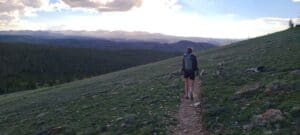
There are small adjustments we can all make in our habits when recreating in the outdoors that can make a big difference. A few things we can all try to do to help the ecosystems that we all enjoy:
- Avoid creating social trails by planning trips ahead and using maps or map apps that have trails clearly marked. Many trail systems navigate sensitive ecosystems that are negatively impacted by human interference. Particularly in muddy seasons it’s important to stay on established trails with your motorized vehicle, bike, and on foot.
- Carpooling - our carbon footprint matters, it’s more fun to ride to the trail with friends, and carpooling helps save money on the increasing costs of gas. Get those group texts going and find a way to drive fewer rigs to the trailhead or to the river bank.
- Get a refillable water bottle or larger water storage for car camping. This is low-effort and can save Wyoming’s wildlife from plastic buildup in waterways and forests. Single-use plastics don’t seem like a big deal in rural areas, but ranchers are dealing with wind-blown trash being ingested by cattle, and recent studies show microplastics in some waterways that could have negative health effects on the humans and animals that consume them.
- Especially where there are posted regulations, keep your dog on a leash. This is another “no fun” rule, but having your dog leashed shows respect for other outdoor enthusiasts who may not enjoy the company of dogs and for the habitat you are recreating in. WGFD reports a fine up to $1000 for dogs harassing wildlife.
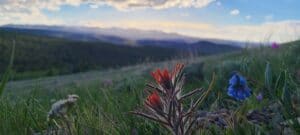
As I reach the end of the meandering trail in the canyon, soft clouds shade the sun and give me time to rest in the company of spring wildflowers. Bluebells, arrowleaf balsamroot, and indian paintbrush paint the landscape bright colors of a Wyoming spring. The bloom of the season reminds me that some things are worth mindfulness, stewardship, and protection. Even though I don’t do everything right, I try within my abilities to leave what I have enjoyed for future generations. Outdoor enthusiasts in Wyoming have the opportunity to show the rest of the country what it looks like to be engaged protectors of wildlife and public lands, and the best part is that it’s easy to do so.
About the AUthor
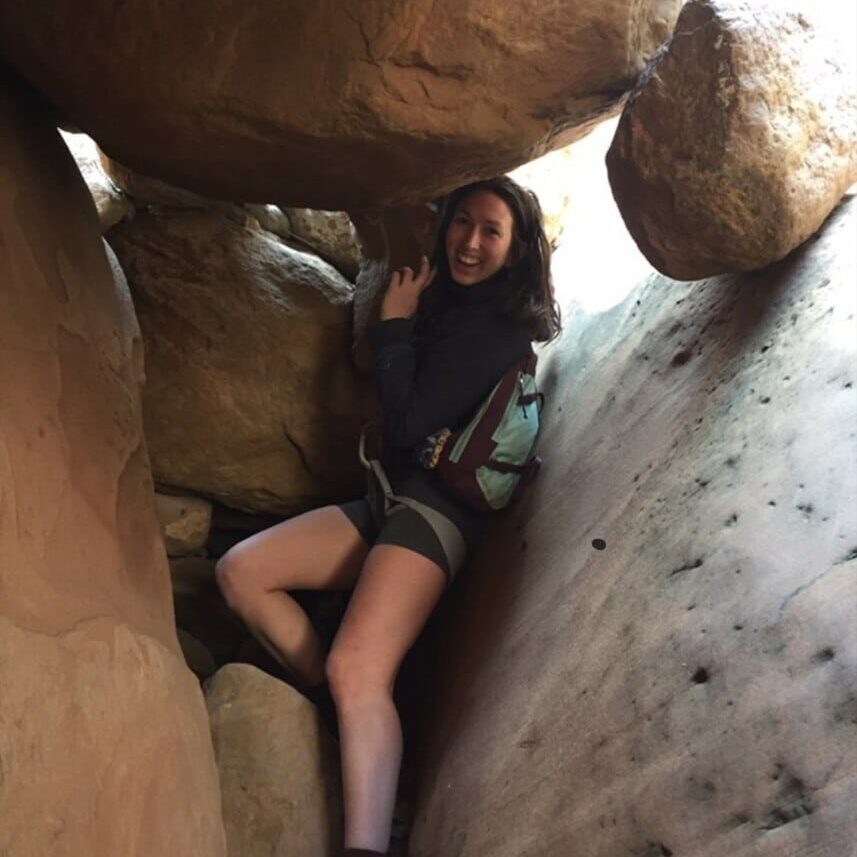
Cassidy Downing is a runner, artist, and passionate conservationist. She hails from Detroit, but now calls Wyoming home where she actively pursues avenues of conservation science and outreach. Cassidy received her BS in Ecology at Northern Michigan University and is now a Wyoming Wildlife Federation Intern and a volunteer software coder with The Nature Conservancy’s Conservation Data Lab. She enjoys wetting some flies on a slow afternoon in the Wind River Mountains ever in pursuit of that perfect cutthroat trout, scouting fields with a wildflower ID book in-hand, and exploring the rich local cultures Wyoming has to offer.
